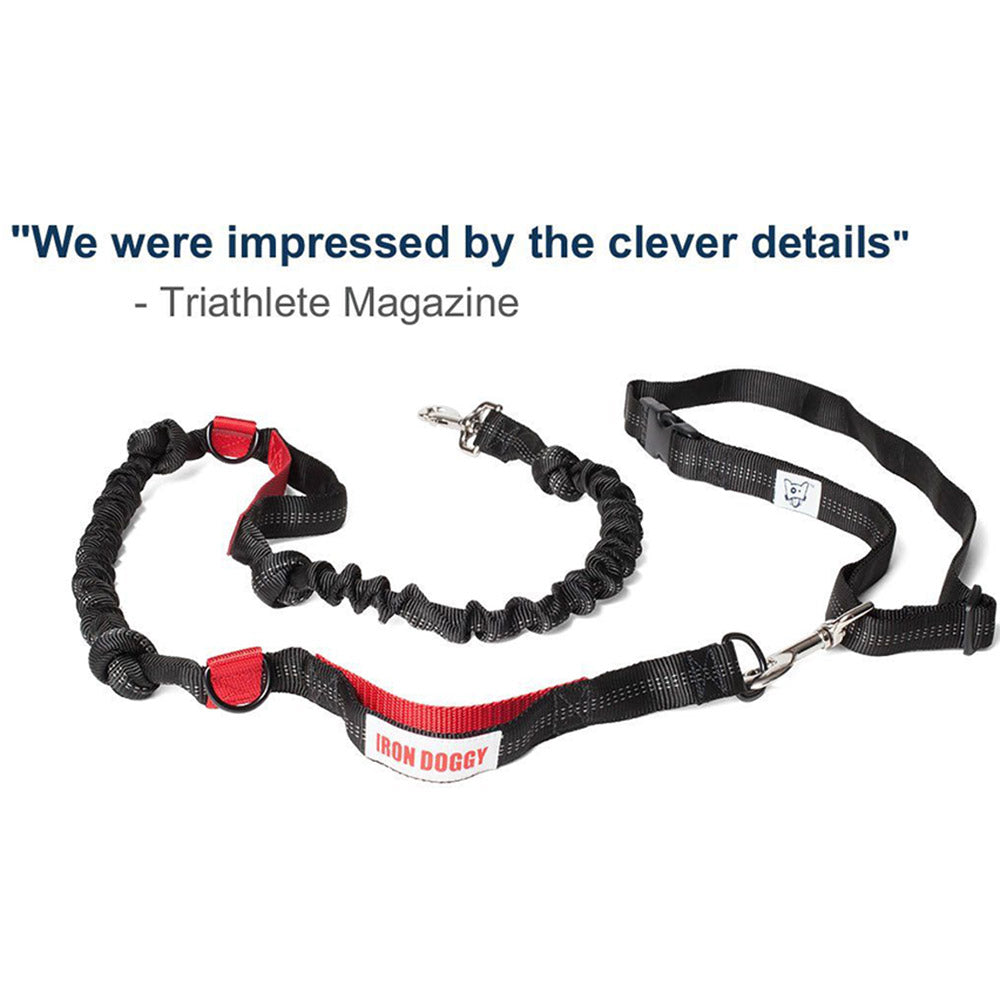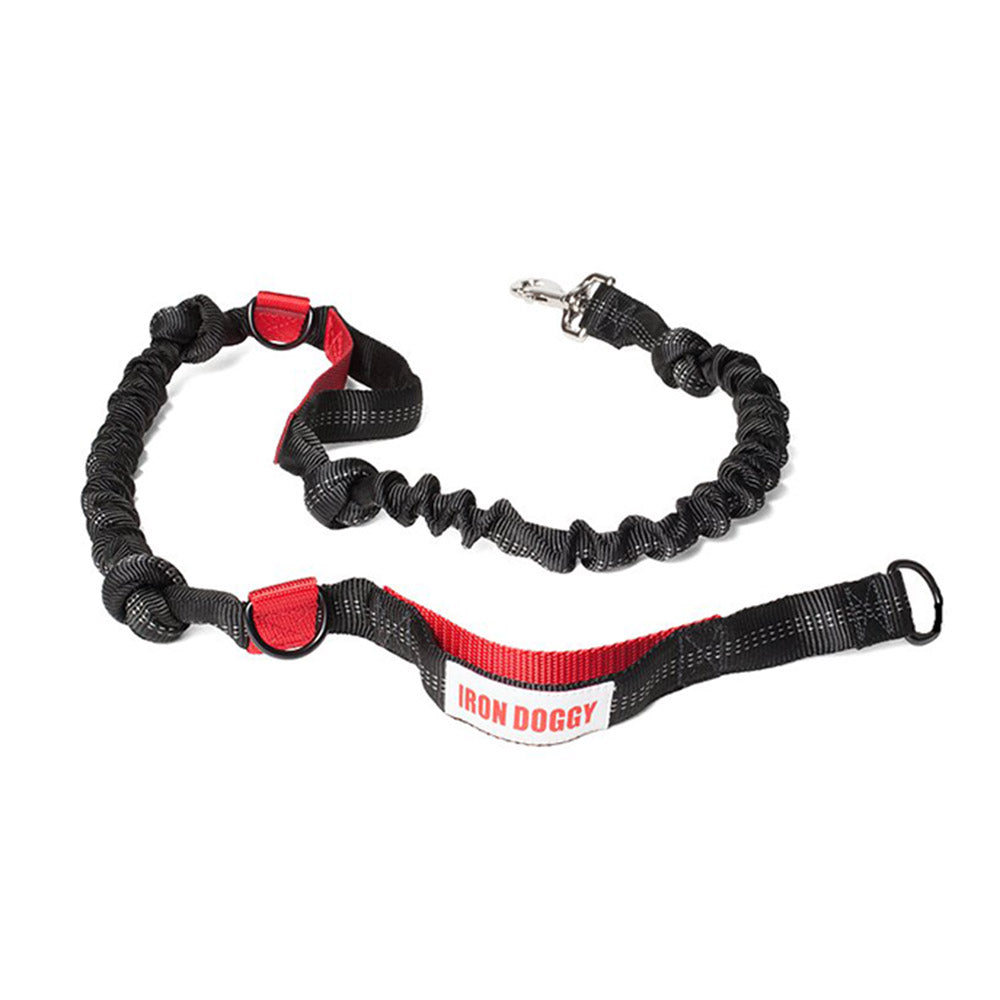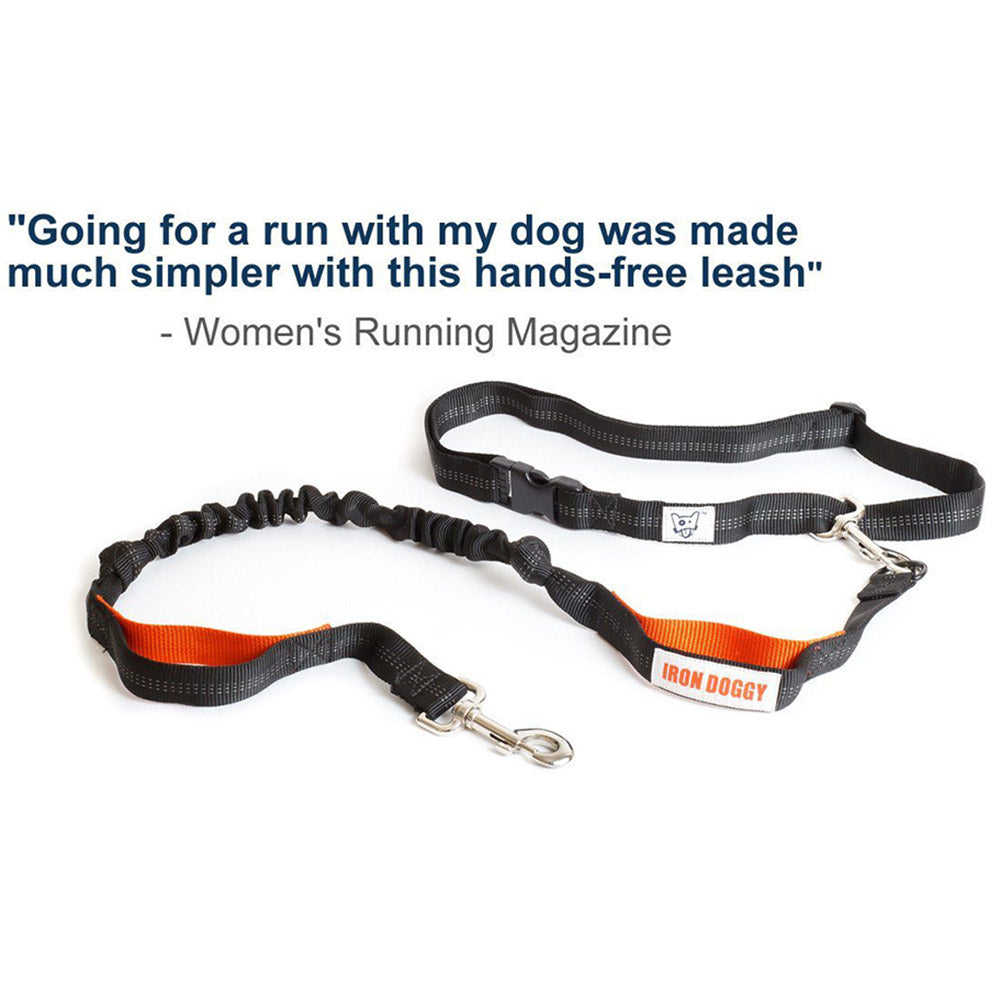
Are you prepared for the potential dangers your pup may face during your next hike? Those dangers can range from ticks (gross!) to poisonous plants to venomous snakes to prowling predators. Learn more about these dangers and how you and your trail dog can prepare for them on your next day's hike. Plus, know what to include in the doggie first-aid kit you should always have with you during your dog's outdoor adventures.
Caution, Dangerous Trails Ahead
Sheer cliffs, foot-trapping boulders (a favorite habitat for snakes!), icy water... These are all common hazards your pup may encounter on a trail. Unless you're familiar with the topography of a trail (or at least have a great topo map), it's a good idea to keep your dog leashed by your side. A great hands-free leash helps both of you avoid the hazards of the trail!
Prowling Predators
What will you do if you or your pet encounters a predator like a bear, cougar, or coyote on the trail? Even an angry, dog-hating moose can put your pooch in serious peril. Knowing what to do ahead of time can mean the difference between life and death when you're confronted by a wild animal.
- Stay aware of your surroundings and don't let your dog out of your sight.
- Put a bell on your dog's collar and wear a whistle around your neck. Making noise alerts predators that you're coming and that you're probably not prey. Unfortunately, noise won't scare away snakes, porcupines, or skunks. Another good reason to keep your pooch close!
- Carry bear spray and know how to use it.
- Don't run — and don't let your dog run either! Running will trigger a predator's chase and kill instinct.
- Make yourself look as big as possible by holding a jacket, backpack, etc. over your head. If nothing else, raise your arms & stand on your tiptoes.
- Speak calmly and firmly in the deepest voice you can manage. A shrill or panicked voice might be mistaken for injured prey.
There's another type of predator to be aware of, too. That's an eager hunter who may mistake your beloved pet for a prize trophy. Check the hunting seasons in the area you're hiking and put an orange vest on your pet if needed. Even if it isn't hunting season, you may want to use that safety vest anyway in case your pet runs into a poacher who doesn't respect hunting rules or an armed camper who can't tell an attacking cougar from a beloved pet.
A trapper's snares can't distinguish between a pet and prey. If you're in an area where trapping is allowed, you should keep your dog close to you so he doesn't accidentally trigger a deadly trap or snare while exploring.
Toxins on the Trail
Your buddy might unexpectedly encounter trail toxins like poisonous plants, stinging insects, and nasty parasites while exploring the joys of the wild. After all, you're not tempted to nibble on poison oak or snap at wasps with jaws wide open... Or are you? At the very least, you should both avoid giardia-laden waters. And those waters include anything that a wild animal might have used as a toilet.
Even the most remote, sparkling clear mountain streams are probably laden with this nasty parasite. The only reasonably safe water is from a rare spring where you can drink the water as it bubbles out from between rocks. That's why you'll want to carry plenty of water for both of you and a collapsible bowl for your best friend.
Be sure to add the phone number of the Pet Poison Helpline to your phone's contact list. If your pet makes a habit of tasting plants, you might want to add a wild plant identification app, too.
Unwelcome Weather
Both heat stroke and hypothermia are risks that you and your trail buddy may encounter while enjoying a hike. It's essential to know what to expect from the weather before heading out and prepare accordingly. Falling into an ice-cold mountain stream or getting caught in a brief but freezing rainstorm can trigger hypothermia on even an otherwise hot summer day.
Thermal Care Items:
- Plenty of clean drinking water to keep your dog well hydrated
- A dedicated pet thermometer (preferably digital)
- An emergency thermal blanket
- Matches plus a firestarter for drying out and warming up
Always carry a laminated chart of your best bud's usual canine vitals. After all, how will you know if he's suffering from heat stroke if you don't know what his normal temperature is? Stashing a simple chart in the first-aid kit ensures that this information will be easily accessible when you need it most.
Creating a Doggie First-Aid Kit
Any ultimate hiking checklist always includes a first-aid kit. The same goes for a four-legged hiker's checklist. Do you know what to include in a first-aid kit for your pet? The contents may vary somewhat according to the area of the country you're in and your dog's particular needs, but certain items are essential everywhere. Check with your vet for more specific information regarding your pet.
Besides the Items Listed Previously, Include the Following Items in Your Dog First-Aid Kit:
- A soft, properly-fitted muzzle (because even the most loving pets may bite when in severe pain or distress)
- Clean disposable gloves
- Small cordless hair trimmer (you can't treat a wound you can't see!)
- A sealed water bottle (for flushing out wounds)
- An irrigation syringe (for flushing eyes and deeper wounds)
- Pet-safe disinfecting wipes or swabs to clean and sterilize wounds (preferably alcohol-free for your pet's comfort)
- Chlorhexidine or tincture of iodine (for disinfecting wounds)
- Bandaging materials (non-stick pads, gauze roll, self-adhesive vet wrap, adhesive tape)
- Emergency splint wrap
- Instant cold packs (to treat swelling and sprains)
- Dog-safe Benadryl (or generic diphenhydramine that's safe for dogs)
- Activated charcoal to help absorb poisons on the way to the vet
- Hydrogen peroxide (to induce vomiting if recommended by a vet)
- Tweezers and/or forceps
- LED magnifier (for removing splinters, thorns, etc.)
- Tick remover
- Wire cutters (for cutting fish hooks in half to remove them)
- Scissors (sharp and rounded tip)
- Nail trimmers and a styptic pencil (for broken nails)
- Headlamp and/or penlight (with fresh batteries!)
- A card with your vet's contact information, the address and phone number of the nearest emergency vet clinic, and your pet insurance info
- Your dog's medical history (vaccination records, allergies, medications) printed out and/or on a USB drive
- A pet first-aid booklet
Visit our Dog Blog for more tips on sharing the great outdoors with your best friend. And for more tips on safely having the max amount of fun with your trail buddy, send us a woof. We're always happy to help four-legged hikers and their buds as they get ready to hit the trail!







